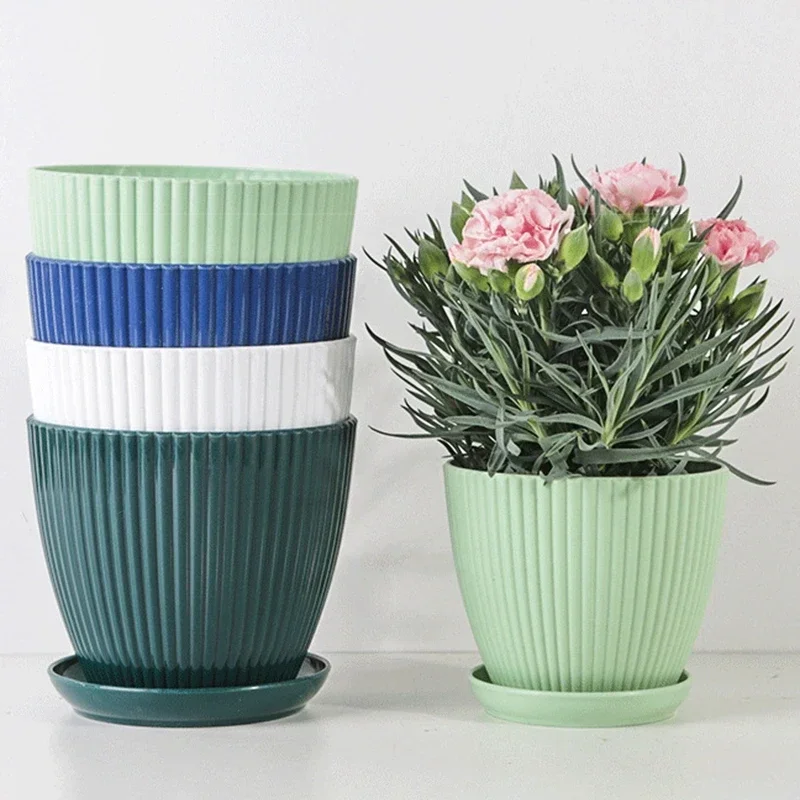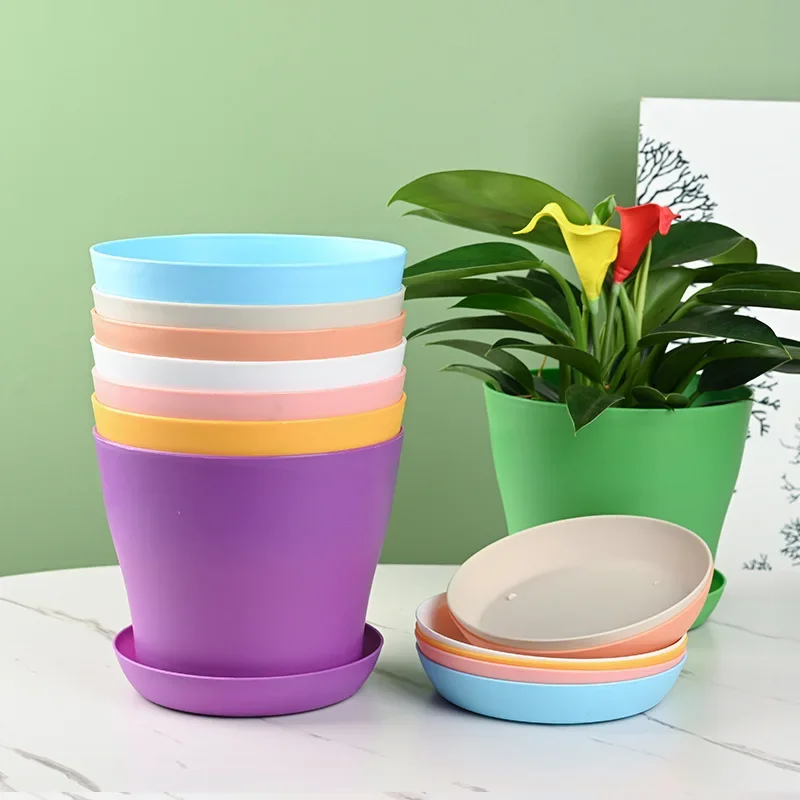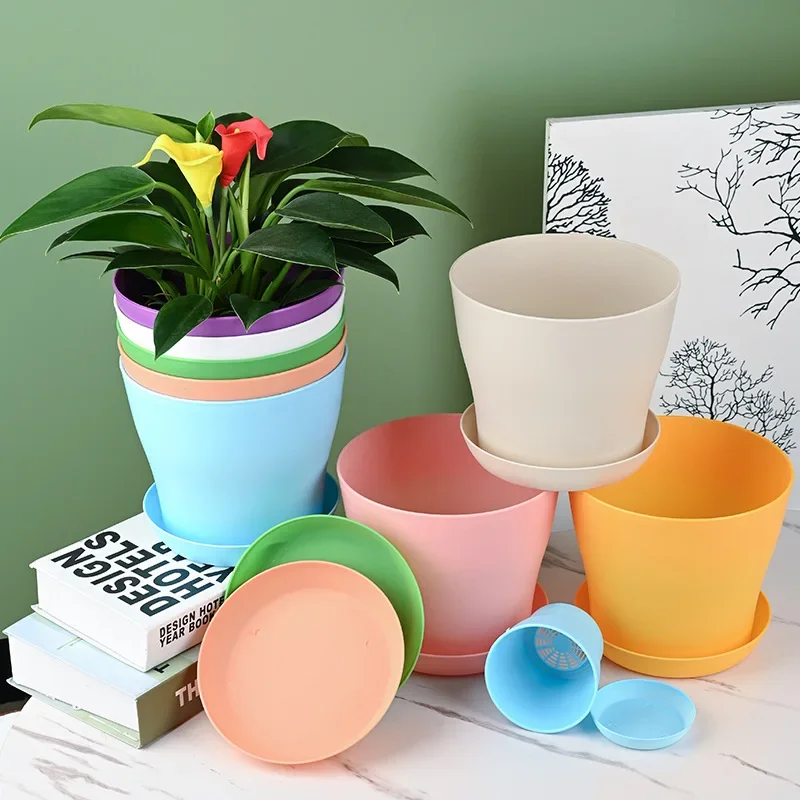Introduction to Plastic Waste and Recycling
In recent years, the conversation surrounding plastic waste has intensified, prompting a growing awareness of our environmental responsibilities. The sheer volume of plastic waste generated globally poses significant ecological challenges, making it imperative for individuals to examine their consumption habits. Plastic flower pots, often overlooked, are ubiquitous in gardening and horticulture, leading many to question: are plastic flower pots truly recyclable? As we delve deeper into this inquiry, we’ll uncover the complexities of recycling, the types of plastics involved, and the challenging realities that face consumers and recyclers alike.
Plastic is a versatile material that has found its way into countless products. However, its resilience—while useful—also contributes to its capacity to remain in landfills and natural environments for years. With approximately 300 million tons of plastic produced every year, we are responsible for a staggering amount of plastic waste, much of which is single-use or not recycled properly. Gardeners and plant enthusiasts often accumulate plastic flower pots over time due to purchases or propagation efforts. Unlike traditional recyclables such as bottles or containers, these pots may present a puzzling conundrum. Understanding the relevance of product types, recycling procedures, and the life cycle of plastic will help inform our decisions regarding these common gardening items.

Understanding Types of Plastic Used in Flower Pots
When it comes to identifying whether plastic flower pots can be recycled, one must first consider the type of plastic they are made from. Most flower pots are crafted from polyethylene (often marked with the recycling code #1), polypropylene (#5), or polystyrene (#6), though variations exist. Each type of plastic has its own properties and recyclability status. Polyethylene, known for its durability and flexibility, is widely accepted in many recycling programs. However, other plastics like polystyrene often face harsh restrictions due to their complex recycling processes and limited markets.
Understanding the recycling system for these materials is crucial. Many municipal recycling programs do not accept all types of plastic, meaning that even if a flower pot is made of recyclable materials, it may not be able to recycle if local facilities do not process that particular plastic type. Furthermore, recycling plastic involves multiple steps, including collection, sorting, and processing, and not all facilities are equipped or willing to handle certain materials. As a result, the journey from a used flower pot to repurpose into new products can convolute, leaving consumers wondering about their choices and responsibilities.
Challenges with Recycling Plastic Flower Pots
It’s essential to highlight the challenges posed by recycling plastic flower pots. One major concern is contamination. Many gardeners use pots for various purposes, leading to residues from soil, fertilizers, or plant remnants that can taint the recycling process. Contaminated materials often get discarded in landfills, wasting the potential for recycling. Additionally, the mixed materials often found in flower pots—like the integrated drainage holes or labels—can complicate the recycling process by requiring extra steps to separate them, resulting in increased costs and reduced interest from recycling centers.
Another challenge stems from the sheer volume of plastic flower pots produced each year. In North America alone, billions manufactur for use in nurseries and retail outlets, creating a substantial market for disposal. As demand for flowers and plants grows, particularly during holiday seasons and home improvement projects, so too does the influx of plastic pots into landfills. Municipalities often ill-equip to handle this increase in waste, leading to a backlog and overflowing waste disposal systems. It begs the question of whether current recycling practices are adequate in addressing this burgeoning problem or if alternative solutions must identify.

Innovative Solutions: Alternative Practices for Disposal and Reuse
In light of these challenges, it’s crucial to explore alternative practices for the disposal and reuse of plastic flower pots. Before tossing them in the recycling bin, consider options such as joint recycling initiatives, creative repurposing, and community swap programs. For instance, local gardening groups may host pot exchanges, allowing gardeners to trade excess pots for new ones. Such initiatives not only reduce waste but also foster community engagement and support biodiversity through the distribution of diverse plant species.
Moreover, repurposing offers a range of innovative uses for plastic pots. They can transform into organizers for craft supplies, storage for small tools, or even as decorative pieces in the home or garden. Such creative recycling emphasizes a closed-loop approach to consumption, encouraging individuals to view products beyond their initial purpose. Engaging in educational efforts to promote awareness of these options can empower individuals in making sustainable choices, thereby reducing reliance on traditional recycling systems.
To further support sustainability, some companies are beginning to manufacture biodegradable or recycled plastic flower pots. Utilizing post-consumer materials reduces the demand for new plastic production and promotes circular economy principles. Additionally, some nurseries are encouraging customers to return their used pots for reuse or recycling, establishing more direct channels in the handling of plastic waste.
The Role of Consumers in Recycling Programs
As consumers, the responsibility of effectively managing plastic flower pots falls squarely on our shoulders. However, to optimally participate in recycling programs, individuals need clear information on local resources and best practices. This includes understanding which types of plastics accept in municipal programs, how to clean and prepare pots for recycling, and what alternatives are available for those unfit for recycling due to contamination.
Furthermore, consumers can advocate for more comprehensive recycling initiatives in their communities by reaching out to local policymakers and organizations. By expressing concern over the accumulation of plastic waste and suggesting the implementation of pot return programs, they can catalyze change at a larger scale. The power of grassroots movements should not underestimate, as they can signal to municipalities that their constituents care about sustainable practices and the effective management of plastic waste.

Trends in Recycling Technologies and Innovations
As the challenges associated with recycling plastic flower pots continue to mount, innovative recycling technologies are emerging to address these issues. Innovations in chemical recycling methods have recently shown promise, enabling the breakdown of plastics into their original monomers, which can repurpose into new plastic products. This offers an advanced recycling alternative that improves the quality of the recycled product while also meaningfully addressing the challenges posed by contamination and mixing materials.
Moreover, advancements in artificial intelligence (AI) and machine learning are streamlining recycling processes by increasing the efficiency of sorting systems. Automated systems can effectively identify different types of plastics, minimizing human error and improving recycling rates. By enhancing the sorting accuracy, recyclers can process a wider array of plastics, ultimately promoting the recycling of plastic flower pots without the complications associated with mixed materials.
Conclusion: A Collective Responsibility for Sustainability
Considering the complexities surrounding the recycling of plastic flower pots, it is evident that addressing this issue requires collaborative efforts on multiple fronts. While increased awareness and education for consumers are essential, industry stakeholders must also engage in sustainable practices and product designs. Governments can play a pivotal role in developing comprehensive recycling policies that include a focus on the lesser-known aspects of plastic waste, such as flower pots.
Ultimately, sustainability hinges on a collective commitment to change. Each of us has a responsibility to mitigate our impact through informed choices; however, it is equally important to amplify voices advocating for collective change. The journey toward responsible consumption encompasses not merely the number of pots recycled but the promotion of sustainable practices across societies. While recycling plastic flower pots poses challenges, the path to an environmentally delicate approach lies in our willingness to explore new solutions and encourage a culture of sustainability among family, friends, and the broader community. By redefining our approach to recycling, we can foster meaningful changes that yield a healthier planet for generations to come.
